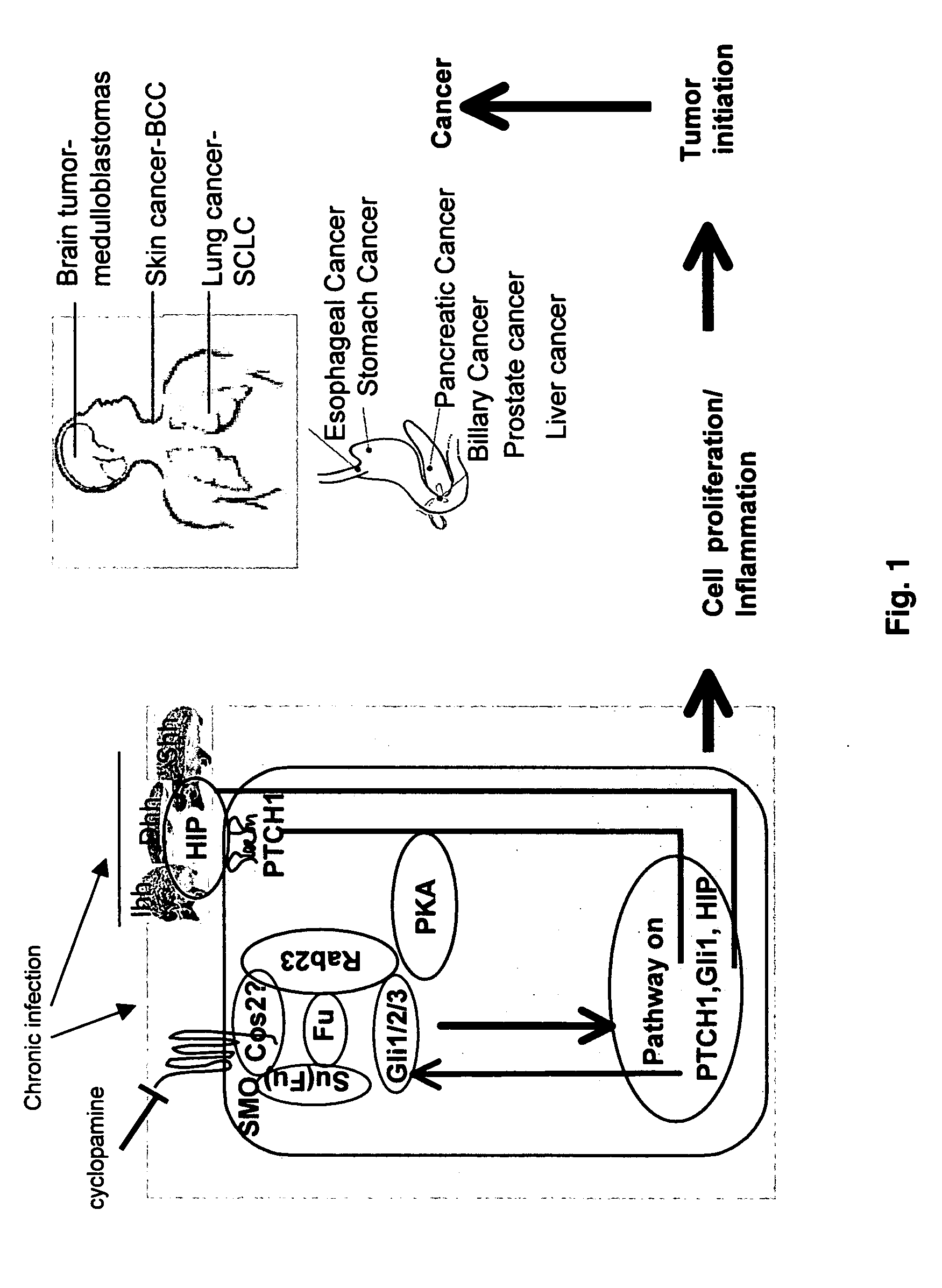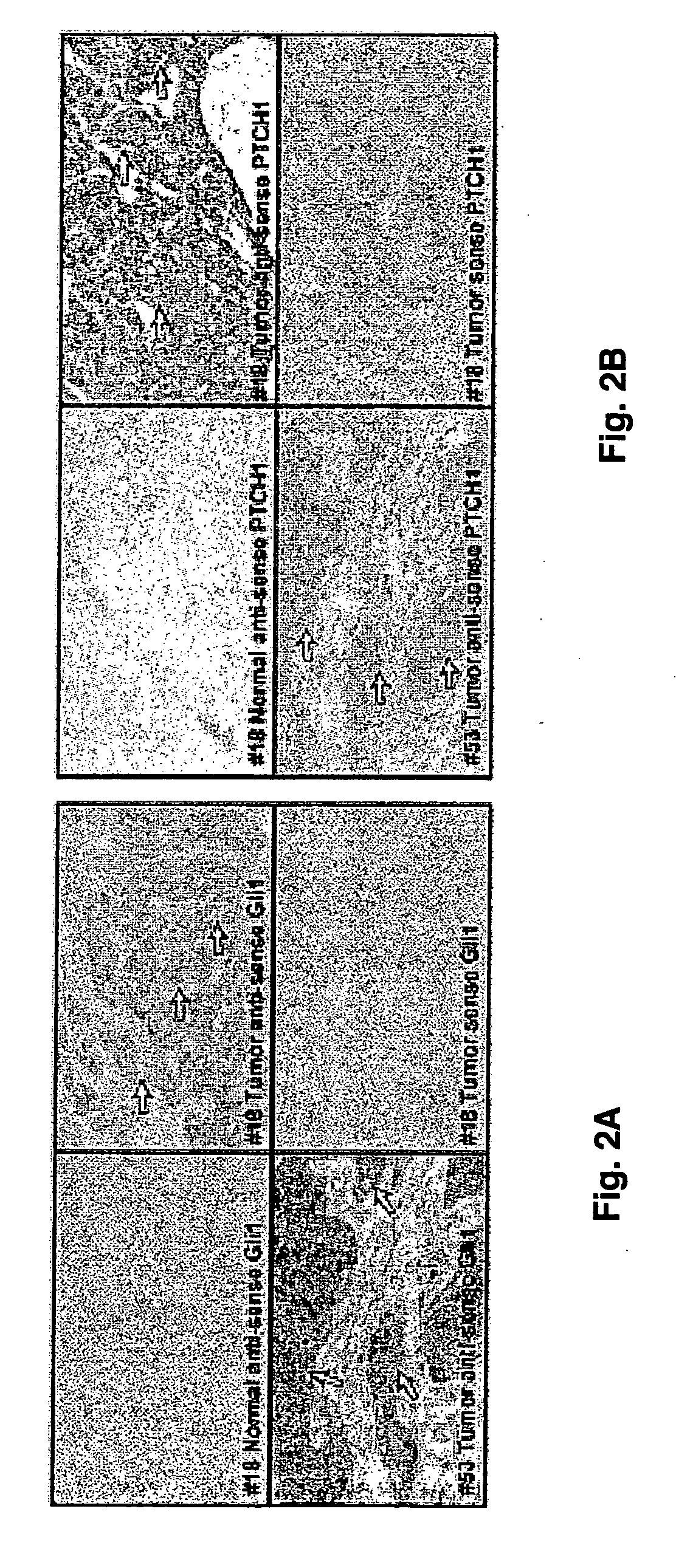Regulation of the hedgehog signaling pathway and uses thereof
- Summary
- Abstract
- Description
- Claims
- Application Information
AI Technical Summary
Benefits of technology
Problems solved by technology
Method used
Image
Examples
example 1
Tissue Samples
[0040] A total of 115 specimens of hepatocellular carcinoma tissues were used. Of these, 14 specimens (pathology reports and H&E staining were reviewed to determine the nature of the disease and the tumor histology) were received from General Surgery of Shan Dong Qi Lu Hospital, Jinan, China and the remaining 101 HCC specimens were in tissue array from Sun Yat-Sen University. Forty-four matched normal liver tissues were used as controls. None of the patients had received chemotherapy or radiation therapy.
example 2
[0041] In situ hybridization was performed according to the manufacturer's instructions (Boehringer Mannheim). Briefly, tissues were fixed with 4% paraformaldehyde in phosphate buffered saline and embedded in paraffin. Further, 6 μm thick tissue samples were mounted on Poly-L-Lysine slides. Samples were treated with proteinase K (20 μg / ml) at 37° C. for 15 min, refixed in 4% paraformaldehyde and hybridized overnight with a digoxigenin-labeled RNA probe (1 μg / ml). The hybridized RNA was detected by alkaline phosphatase-conjugated anti-digoxigenin (Roche Molecular Biochemicals) which catalyzed a color reaction of the substrate NBT / BCIP (Roche, Mannheim, Germany). Blue signal indicated positive hybridization. Tissues with no blue signal were regardes as negative. As negative controls, sense probes were used in the hybridization and no signals were observed. In situ hybridizations were repeated at least twice for each tissue sample with similar results.
example 3
RNA Isolation and Quantitative RT-PCR
[0042] Total RNA of cells was extracted using a RNA extraction kit from Promega according to the manufacturer (Promega, Madison, Wis.) and qunatitative PCR analyses were performed according to the previously published procedure (Ma et al., 2005; Chi et al., 2006). Triplicate CT values were analyzed in Microsoft Excel using the comparative CT (ΔΔCT) method as described by the manufacturer (Applied Biosystems, Foster City, Calif.). The amount of target (2−ΔΔCT) was obtained by normalization to an endogenous reference (18S RNA) and relative to a calibrator. The following primers were used for RT-PCR of Shh: forward primer-5′-ACCGAGGGCTGGGACGAAGA-3′; reverse primer-5′-ATTTGGCGCCACCGAGTT-3′ (SEQ ID Nos: 1 and 2).
PUM
| Property | Measurement | Unit |
|---|---|---|
| thick | aaaaa | aaaaa |
| concentration | aaaaa | aaaaa |
| real time PCR | aaaaa | aaaaa |
Abstract
Description
Claims
Application Information
 Login to View More
Login to View More - R&D
- Intellectual Property
- Life Sciences
- Materials
- Tech Scout
- Unparalleled Data Quality
- Higher Quality Content
- 60% Fewer Hallucinations
Browse by: Latest US Patents, China's latest patents, Technical Efficacy Thesaurus, Application Domain, Technology Topic, Popular Technical Reports.
© 2025 PatSnap. All rights reserved.Legal|Privacy policy|Modern Slavery Act Transparency Statement|Sitemap|About US| Contact US: help@patsnap.com



